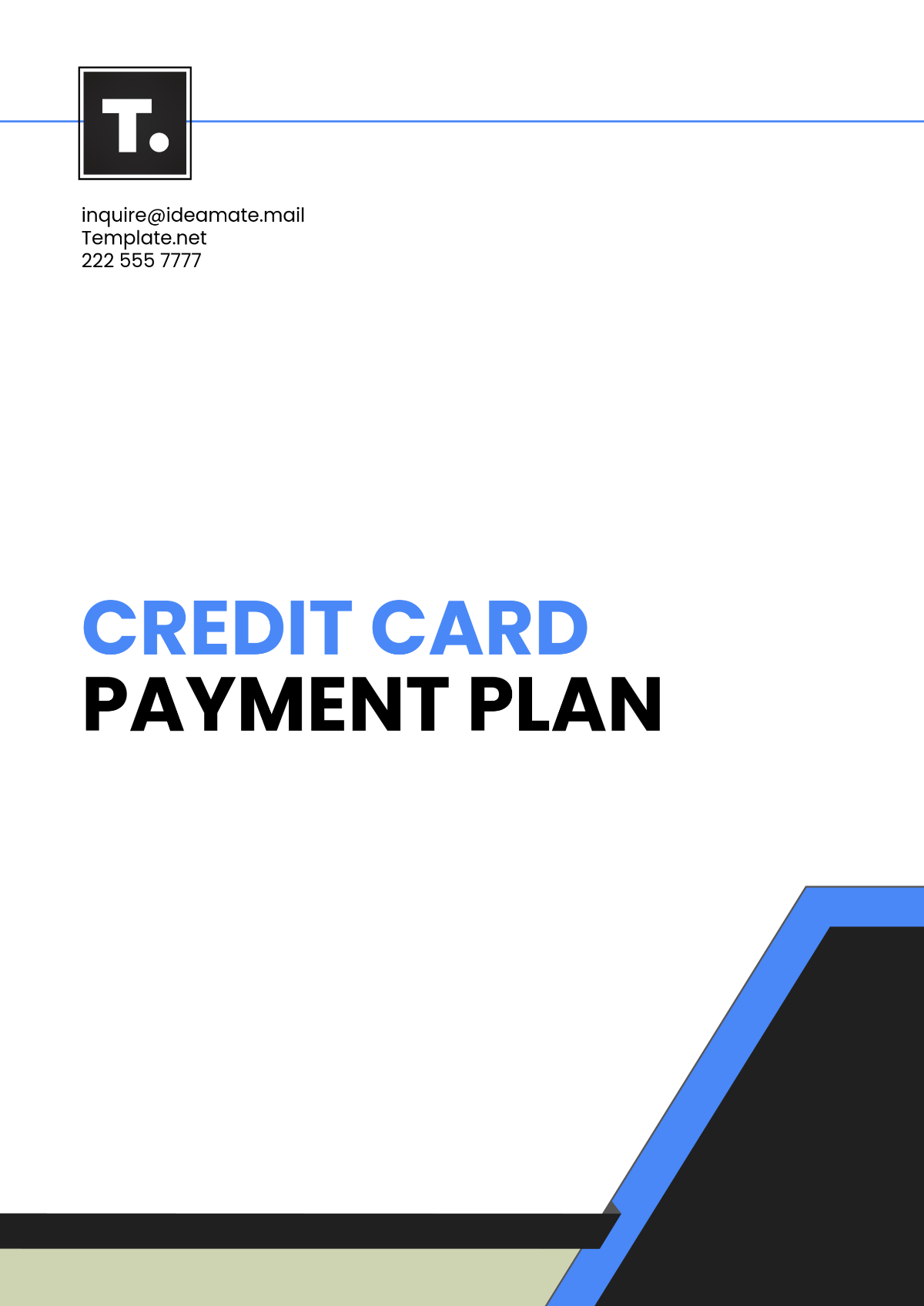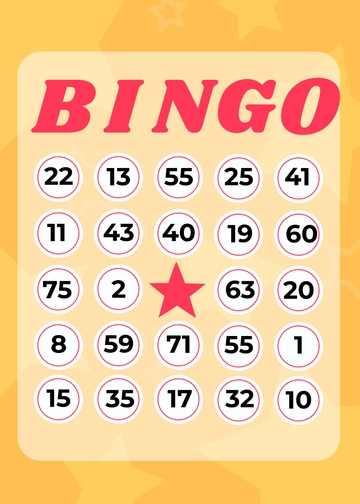Free Credit Card Payment Plan

I. Introduction
The Credit Card Payment Plan serves as a structured approach to managing credit card payments and overall financial obligations. This plan aims to assist individuals in budgeting effectively to allocate funds for credit card payments while also covering essential expenses.
II. Financial Assessment
Current Income:
Determine the total monthly income including salaries, bonuses, freelance earnings, etc. For example, John Smith's total monthly income is $4,500 from his full-time job and $700 from freelance work.
Fixed Expenses:
List essential fixed expenses such as rent/mortgage, utilities, insurance premiums, etc. For instance, [Your Name]'s fixed expenses include $1,200 for rent, $150 for utilities, and $100 for insurance.
Variable Expenses:
Identify variable expenses like groceries, entertainment, transportation, etc. The client spends approximately $400 on groceries, $200 on transportation, and $150 on entertainment monthly.
Debt Obligations:
Detail any existing debts besides credit card balances. The client has a student loan with a monthly payment of $250.
III. Credit Card Evaluation
Card Details: List all credit cards held, including balances, interest rates, minimum payments, and due dates. The client has three credit cards:
Credit Card | Balance | Interest Rate | Minimum Payment | Due Date |
|---|---|---|---|---|
Card 1 | $2,500 | 18% | $50 | 10th |
Card 2 | $1,000 | 22% | $30 | 15th |
Card 3 | $500 | 15% | $25 | 20th |
Prioritize Cards: Assess cards based on interest rates, outstanding balances, and payment terms. [Your Name] decides to prioritize Card 2 due to its highest interest rate.
Consolidation Options: Explore consolidation strategies if applicable. The client is considering consolidating his credit card debt into a single loan with a lower interest rate.
IV. Budgeting for Credit Card Payments
Minimum Payments: Allocate funds to cover minimum payments for each credit card. The client budgets $105 to cover the minimum payments for all three cards.
Target Payments: Determine additional amounts to pay towards high-interest or high-balance cards. The client plans to allocate an extra $150 towards Card 2 to expedite its repayment.
Emergency Fund: Set aside a portion of income for emergency savings to prevent reliance on credit cards for unexpected expenses. The client aims to save $200 monthly for emergencies.
V. Expense Allocation
Essential Expenses: Allocate funds for fixed expenses like rent/mortgage, utilities, insurance, etc. [Your Name] earmarks $1,450 for essential expenses.
Variable Expenses: Budget for variable expenses such as groceries, transportation, entertainment, etc. The client allocates $750 for variable expenses.
Discretionary Spending: Limit non-essential spending to ensure sufficient funds for debt repayment. The client plans to cap discretionary spending at $300.
VI. Payment Schedule
Due Dates: Mark due dates for credit card payments on a calendar or planner. The client sets reminders for the 10th, 15th, and 20th of each month.
Payment Methods: Choose preferred payment methods (online, automatic payments, etc.). The client opts for automatic payments to avoid missing deadlines.
Payment Confirmation: Ensure payments are made on time and confirm transactions for accuracy. The client checks his bank statements regularly to verify payments.
VII. Monitoring and Adjustments
Regular Review: Schedule periodic reviews of the payment plan to track progress and make adjustments as needed. [Your Name] plans to review his plan monthly to assess its effectiveness.
Financial Goals: Set short-term and long-term financial goals to stay motivated and focused on debt repayment. The client aims to pay off Card 2 within six months.
Credit Score Monitoring: Monitor credit scores regularly to track improvements resulting from timely payments and debt reduction efforts. [Your Name] checks his credit score quarterly using a reputable credit monitoring service.
VIII. Seeking Assistance
Financial Advisor Consultation: Seek guidance from a financial advisor for personalized assistance in managing credit card debt and financial planning. [Your Name] schedules a meeting with a certified financial planner to review the payment plan.
Debt Counseling Services: Consider professional debt counseling services for additional support and advice. The client researches reputable debt counseling agencies in his area.
Credit Card Issuer Assistance: Contact credit card issuers for potential hardship programs or debt repayment assistance. The client reaches out to his credit card companies to inquire about any available hardship programs.
IX. Conclusion
The Credit Card Payment Plan provides a framework for individuals to effectively manage credit card payments while maintaining financial stability. By adhering to the plan and making timely payments, individuals can work towards reducing debt and achieving their financial goals.

[Your Name]
[Position]
- 100% Customizable, free editor
- Access 1 Million+ Templates, photo’s & graphics
- Download or share as a template
- Click and replace photos, graphics, text, backgrounds
- Resize, crop, AI write & more
- Access advanced editor
Reduce credit card debt efficiently with Template.net's Credit Card Payment Plan Template. Customizable and editable in our AI Editor Tool, this template offers a clear strategy for paying down balances and managing payments. Simplify your financial management today.
You may also like
- Birthday Greeting Card
- Wedding Card
- Engagement Card
- Invitation Card
- Background Card
- Teacher's Day Card
- New Year Card
- Save The Date Card
- Loyalty Card
- Valentine's Day Card Templates
- Mother's Day Card
- Greeting Card
- Eid Al Fitr Card
- Anniversary Card
- Farewell Card
- Thanksgiving Card
- Holiday Card
- Graduation Card
- Congratulations Card
- Father's Day Card
- Easter Card
- Get Well Soon Card
- Retirement Card
- Obituary Card
- Funeral Card
- Baby Shower Card
- Love Card
- Photo Card
- Game Card
- Baptism Card
- Funny Card
- Friendship Card
- Welcome Card
- Sympathy Card
- Good Luck Card
- Kids Card
- Bar Mitzvah Card
- Bridesmaid Card
- Change Of Address Card
- Cleaning Services Card
- Comment Card
- Encouragement Card
- Exam Card
- Folded Card
- Half Fold Card
- Hug Card
- Keep in Touch Card
- Library Card
- Loss Of Pet Card
- Membership Card
- Miss You Card
- Monopoly Card
- Name Card
- New Baby Card
- New Home Card
- Prayer Card
- Punch Card
- Raksha Bandhan Card
- Report Card
- Sorry Card
- Spa Card
- Sports Card
- Teacher Appreciation Card
- Tent Card
- Thinking of You Card
- Wedding Reception Card
- Wedding Advice Card
- Appointment Card
- Bridal Shower Card
- Christmas Card
- Church Card





























